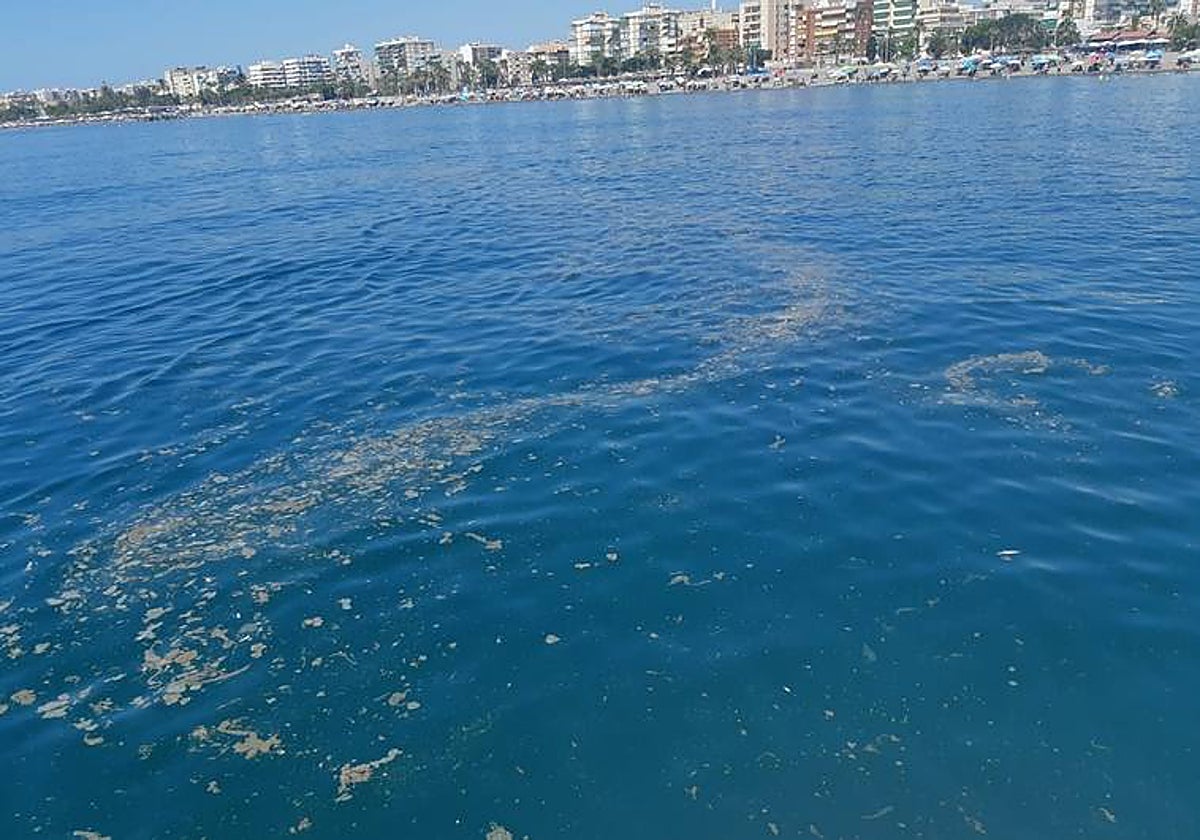Axarquía beachgoers complain about 'filthy' sea
Beach cleaning boats are unable to remove dirt from the water's surface once it has got close to the shore; local authorities have said that the wastewater treatment plants are working "correctly"
Eugenio Cabezas
Monday, 7 August 2023, 20:24
"There is little or nothing we can do when the ‘natas’ appear," said Manuel Rivas, manager of the company Servimar Axarquía, referring to the foam or scum that often appears on the surface of the water.
Servimar operates the fleet of 12 sea cleaning boats - known as 'quitanatas' - along the Axarquía coastline. They try to dissolve the foam before it gets close to the shore, although if it does, "it is almost impossible to stop it there", explained Rivas.
In the last few days, beachgoers on the eastern strip of the Costa del Sol have reported an increase in the presence of foam and dirt in the seawater close to the shore.
The problem is not new and becomes more acute during peak season. "The sea was calm after a few days of windy weather and we had a lot of work to do along the coast, from Rincón de la Victoria to Nerja with the boats," said Rivas, who acknowledged that since the Nerja treatment plant came into operation at the end of 2020, there is "much less" foam in the sea there.
However, on El Peñoncillo beach in Torrox, one beachgoer reported on Monday 31 July the "very abundant" presence of ‘natas’ on the shore, which they said was "totally contaminated".
No reply from town hall
"I have been there for 15 years and this filthy foam always, systematically, appears in the sea," Pedro complained in a message sent to SUR. The local resident said that he has sent photos and messages to Torrox town hall "and never received a reply". He added, "I suppose that if the health service came, they would close this beach.”



The coastal cleaning service contracted through the Mancomunidad de Municipios de la Costa del Sol Oriental-Axarquía has responded to the complaints by saying that the four wastewater treatment plants managed by the public company Axaragua (Vélez-Málaga, Rincón de la Victoria and the two in Torrox) are "working correctly". However, they admit that during the tourist peaks in these summer days the workload "increases drastically” and recognises that the plants were “designed and built several decades ago”.
The 'quitanatas' boats are distributed along the entire eastern coastline, with five in Vélez-Málaga (with 22 kilometres of beach), two in Nerja, Torrox and Rincón de la Victoria and one in Algarrobo. On days with rough seas the boats do not go out to work.
"Only in Rincón de la Victoria do they specifically hire the 'quitanatas' catamaran, which is much more effective; in the other cases all we can do is use buckets with the nets to try to dissolve the foam," explained Rivas.
Jellyfish
Bathers have also reported more jellyfish in the sea off the eastern Costa del Sol over the last week. Rivas pointed out that they are removing the larger ones and taking them back out to sea. However, the presence of smaller species, such as the 'pelagia noctiluca', is much lower than in previous years. "The area where we have the most work every year is in Torre del Mar, due its proximity to Caleta de Vélez harbour, as we have to remove a lot of dead fish and rubbish from there.”
According to the data provided to this newspaper by Servimar Axarquía, last year the company removed 19,200 kilos of organic matter, including dead fish, algae and jellyfish from the 40 kilometres of Axarquia coastline between 15 June and 15 September. Inorganic matter amounted to 13,800 kilos, including plastics, wood, cans and branches, among others.
